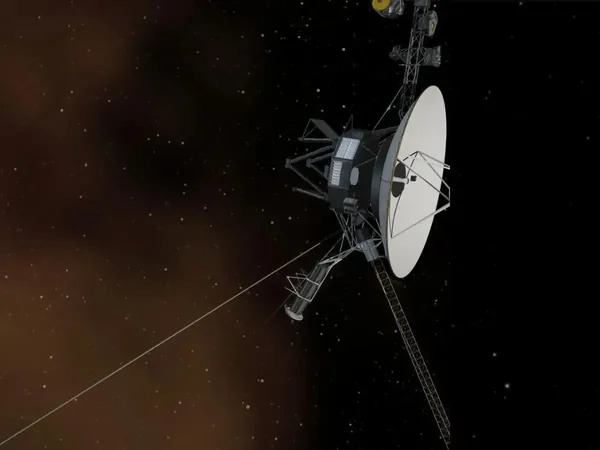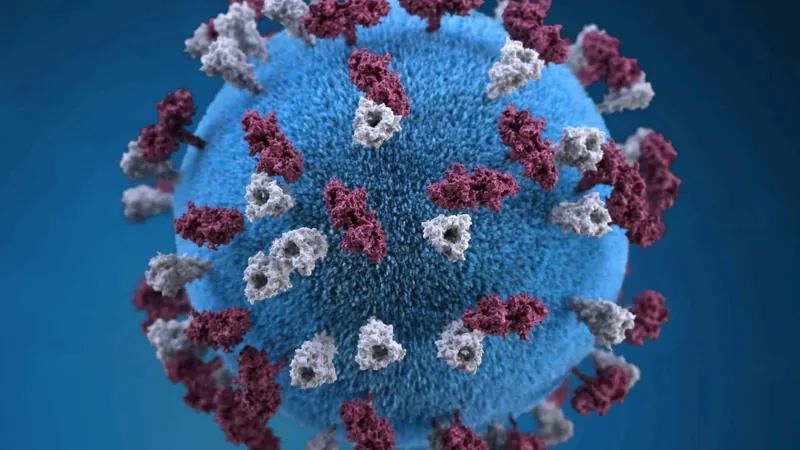
Unveiling History: The Oldest Mixed Human-Neanderthal Fossil Found in Israel
2025-08-20
Author: Liam
A Revolutionary Find in the Heart of Israel
A groundbreaking discovery in Israel has reshaped our understanding of human evolution, revealing the earliest known biological and social connections between Neanderthals and Homo sapiens, dating back an astonishing 140,000 years.
The Remarkable Child Skeleton
Unearthed nearly a century ago, the fossilized skeleton of a five-year-old child from Sefunim Cave on Mount Carmel exhibits a unique blend of Neanderthal and Homo sapiens traits. This remarkable find is now recognized as the oldest human fossil showcasing such mixed characteristics.
Leading the Charge in Research
This international study was led by a team of experts from Tel Aviv University and the French National Center for Scientific Research. With prominent figures like Prof. Israel Hershkovitz from the Sackler Faculty of Medicine and Anne Dambricourt-Malassé at the helm, their findings were recently published in the prestigious journal l’Anthropologie.
The Genetic Puzzle Solved
Prof. Hershkovitz explained, "Genetic studies over the past decade have shown that these two groups frequently exchanged genes. Fast-forward to today, and approximately 2% to 6% of our genome still carries Neanderthal DNA, a result of interbreeding that occurred between 60,000 and 40,000 years ago." However, the Sefunim child's fossil offers a much earlier example of this gene flow.
The child's skull, primarily resembling Homo sapiens with its curved cranium, also displays Neanderthal-specific features such as its cranial blood supply, lower jaw, and inner ear structure.
Challenging Established Narratives
This discovery challenges previous theories suggesting that Neanderthals evolved in Europe and only arrived in Israel around 70,000 years ago. Instead, evidence shows that early Neanderthals existed in the region as far back as 400,000 years ago, as identified in a 2021 study led by Prof. Hershkovitz, featuring a population termed 'Nesher Ramla Homo.' This study hinted at encounters between these early Neanderthals and migrating Homo sapiens approximately 200,000 years ago.
The findings imply that interbreeding occurred far earlier than once understood, suggesting that Neanderthals in the region gradually merged with Homo sapiens, paralleling events witnessed in Europe.
Advanced Technology Reveals Hidden Secrets
The conclusions of this study stem from meticulous testing on the fossil itself. Utilizing micro-CT scanning at Tel Aviv University’s Shmunis Family Anthropology Institute, researchers developed an intricate 3D model of the skull and jaw. This allowed for an in-depth anatomical analysis, including insights into concealed structures like the inner ear.
The team even reconstructed the cranial blood vessel network in stunning detail, marking this fossil as the earliest physical evidence of Neanderthal-Homo sapiens interbreeding. Notably, while a child skeleton discovered in Portugal in 1998—known as the 'Lapedo Child'—also exhibited mixed characteristics, it dated to just 28,000 years ago, placing it over 100,000 years later than the Sefunim child.
A Shift in Understanding Human Ancestry
This incredible discovery not only elucidates the complexities of Neanderthal and Homo sapiens interactions but also enriches our understanding of human ancestry, affirming that our evolutionary history is far more intricate than previously imagined.









 Brasil (PT)
Brasil (PT)
 Canada (EN)
Canada (EN)
 Chile (ES)
Chile (ES)
 Česko (CS)
Česko (CS)
 대한민국 (KO)
대한민국 (KO)
 España (ES)
España (ES)
 France (FR)
France (FR)
 Hong Kong (EN)
Hong Kong (EN)
 Italia (IT)
Italia (IT)
 日本 (JA)
日本 (JA)
 Magyarország (HU)
Magyarország (HU)
 Norge (NO)
Norge (NO)
 Polska (PL)
Polska (PL)
 Schweiz (DE)
Schweiz (DE)
 Singapore (EN)
Singapore (EN)
 Sverige (SV)
Sverige (SV)
 Suomi (FI)
Suomi (FI)
 Türkiye (TR)
Türkiye (TR)
 الإمارات العربية المتحدة (AR)
الإمارات العربية المتحدة (AR)